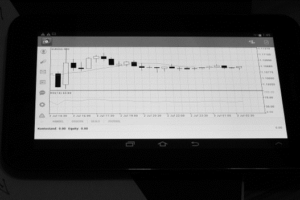Life After Indian Point

The lower Hudson Valley region in May is starting its own version of the “green new deal,” as Indian Point shuts down one unit, and a new natural gas plant comes online in Columbia County.
The complexity and financial price of meeting Gov. Cuomo’s aggressive environmental energy goals raise two fundamental questions that no one can answer right now – will the lights stay on, and can we afford the cost?
The tangled story of New York’s green energy pursuit has several contradictions, or “bridges to the future,” embedded in its strategy.
The Cuomo administration’s goal is 70% renewable energy by 2030, and 100% carbon-free electricity by 2040.
RENEWABLE INVESTMENT
The governor plans 21 large-scale renewable projects — solar, wind and energy storage — that are expected to generate $2.5 billion in private investment in the coming years. Those projects will take years to come to fruition.
Closing Indian Point’s two remaining units takes 2,000 megawatts of nuclear power off line. Supporters argue that nuclear fuel is the ultimate clean energy, with no carbon emissions.
In fact, the governor has imposed a $2-a-month fee on Con Ed bills downstate to subsidize the continued operations of two other nuclear plants upstate, seemingly endorsing nuclear power.
In addition, the current linchpin to get from here to there remains natural gas, a lower-carbon energy source that environmentalists are trying to stop.
LEGAL CHALLENGES
One natural gas plant in Orange County is now generating 680 megawatts that can help fill the Indian Point shortfall, but legal challenges could shut that down.
The new natural gas plant in Dover, N.Y. – Cricket Valley – can generate another 1,000 megawatts of electricity and is scheduled to come on line in April. That plant too faces legal challenges from environmentalists.
Building all these new renewable energy sources – wind turbines, solar displays, and energy storage facilities – at a fast pace, with reduced development costs, poses a major obstacle.
But on April 3 the Democrat-controlled state legislature in Albany included a new law in the overall state budget that effectively gives the governor’s appointee the sole power to override all local zoning laws and permit these energy projects where the state sees fit.
CARBON TAX
Another approach to promoting environmental energy in New York state is adding a carbon tax to drive up the floor price of natural gas. The carbon-pricing scheme needs the approval of the Federal Energy Regulatory Commission (FERC).
So, will the lights stay on? The answer is probably yes. The New York State Independent Systems Operator (NYISO), which oversees the state’s energy grid, reported in 2018 that adequate supplies of energy should be available, aided by the new natural gas plants in Orange County and at Cricket Valley.
As far as cost – that will inevitably rise. The only question is by how much.
One certainty on that front is that Con Ed has already won approvals to raise prices for the next three years – electricity by 4.2% in 2020, 4.7% in January 2021 and 4% in January 2022. Natural gas will rise 7.5% this year, 8.8% in 2021 and a 7.2% in 2022.
Jim Roberts is a freelance business reporter based in Peekskill.







It is simply not true that natural gas is lower carbon. A correction should be issued here. Fracked gas is called “natural gas” to sound soothing and green, when high-volume hydraulic fracturing in deep shale with horizontal drilling is more like mountaintop removal underground. It is well documented that fracking harms climate, contaminates water and air, and harms human and animal health. That’s exactly why it was banned in New York State. Yet we continue lurching forward with an unnecessary “frack your neighbor” type policy– unbelievably building yet more fracked gas power plants to harm climate in the same old 20th century way. The fact is that cradle to grave (the only metric that matters for climate), fracked gas is even worse than coal for climate. Its total greenhouse gas emissions must include the methane leaks from wellhead to on-site processing, to transmission lines and compressor stations, to distribution lines and end use. Ghg emissions calculations must also include the thousands of diesel truckloads of chemicals, heavy equipment, water, and frac sand, per frack, per well. These are the laws of physics, which are the only laws that matter for climate. We must calculate the carbon impact of fracked gas power plants including real science and real data from the past 12 years, rather than using the industry’s well-worn “bridge fuel” charade based on old, pre-fracking days when methane was just thought of as another invisible and unknown factor. Methane is now well-studied; it is at least 86 times more potent a global warming gas than C02 in the 20 year time frame. And the 20 year time frame is the urgent and important frame for out of control climate feedback loops. If we were not already in a climate emergency, this would not matter. But we are. And it does.
A Green New Deal does not mean allowing a fracked gas plant to pollute the air and water with deadly carbon and other greenhouse gases. We needed zero carbon emissions / 100% renewables (solar, wind, geothermal) 20 years ago. Cuomo’s climate action plan is nothing to celebrate. It is a complete disregard for the crisis we face and a slap in the face to people that have to suffer from breathing in polluted air and drinking contaminated water in the Hudson Valley.
Is cost ever a consideration to the green crowd or is someone else expected to pay for all of our electric and heating usage? Is new green nuclear energy ever a possibility? It looks nothing like the 1950’s designed Indian Point reactors. I certainly do not want windmills destroying the vistas of the Hudson River Valley.
It is about a well-planned strategy taking advantage of proven technologies well in advance of shuttering a clean power source like Indian Point which delivers 30% of downstate power. Solar panels and windmills will not replace that anytime soon.
Unfortunately, Mr. Cuomo is all about feel good politics and has failed us in delivering an alternative to Indian Point. Artificially raising utility rates to punish consumers will only force more of us and businesses to relocate out of this State.
I have to say, I agree with both Iris AND Frank. Upstream emissions on fracked gas make it the dirtiest of all fossil fuels. What is ignored or misunderstood is that renewables will never provide baseload electricity. When IP2 shut down, we lost an annual energy supply significantly greater than what is contributed by all the wind and solar in the state, and it provided baseload electricity to the metro area. Now we are burning gas to supply that loast power: CVE, CPV but also more combustion at older plants like Ravenswood in the inner city. The largest battery in the world – under construction in California – might supply half an hour of Indian Point’s energy, assuming you could charge it. What Germany discovered, what NYISO already understands, is that you need a megawatt of dispatchable energy for every megawatt of wind or solar. People will want heat and light even if the sun doesn’t shine and the wind doesn’t blow. Germany has had to burn more gas despite their enviable renewable installations. Current generation nuclear reactors are cleaner, smaller, and more powerful than last century’s. Unlike renewables, they are energy dense and can supply baseload. We would not need to cover the planet with panels or wind turbines. There is an environmental cost to every carbon-free energy source, but we must acknowledge that some solutions will enable us to save the planet, and others won’t.